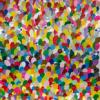DNA barcoding detects contamination and substitution in North American herbal products
Steven G Newmaster, Meghan Grguric, Dhivya Shanmughanandhan, Sathishkumar Ramalingam and Subramanyam Ragupathy
BMC Medicine 2013, 11:222 doi:10.1186/1741-7015-11-222
Published: 11 October 2013
... We used DNA barcoding to conduct a blind test of the authenticity for (i) 44 herbal products representing 12 companies and 30 different species of herbs, and (ii) 50 leaf samples collected from 42 herbal species. Our laboratory also assembled the first standard reference material (SRM) herbal barcode library from 100 herbal species of known provenance that were used to identify the unknown herbal products and leaf samples.
Results
... Most (59%) of the products tested contained DNA barcodes from plant species not listed on the labels. Although we were able to authenticate almost half (48%) of the products, one-third of these also contained contaminants and or fillers not listed on the label. Product substitution occurred in 30/44 of the products tested and only 2/12 companies had products without any substitution, contamination or fillers. Some of the contaminants we found pose serious health risks to consumers.
Conclusions
Most of the herbal products tested were of poor quality, including considerable product substitution, contamination and use of fillers. These activities dilute the effectiveness of otherwise useful remedies, lowering the perceived value of all related products because of a lack of consumer confidence in them. ...
Chinese Herbs: Elixir of Health or Pesticides Cocktail?
This report from Greenpeace summarizes the findings of an investigation looking at key
actors in Chinese agriculture: local farmers, traders, and employees at processing plants. It
details the results from scientific testing of 65 Chinese herbal products, including wolfberries,
honeysuckle, Sanqi flowers and chrysanthemum, which were purchased from nine retail chains
in nine different cities across China [NB -- not the North American market -MR] between August 2012 and April 2013.
Greenpeace found:
• The 65 samples tested contained 51 different kinds of pesticide residues.
• 48 out of 65 samples tested positive for pesticide residues.
• Six residues were from pesticides that have been banned in China (phorate, carbofuran,
fipronil, methamidophos, aldicarb and ethoprophos). These were found in 26 samples. The
World Health Organization (WHO) has classified some of these pesticides as extremely or
highly hazardous.
• On the San Qi Flower, thiophanate-methyl residue was 500 times over the European
maximum residue limit (MRL). On the honeysuckle, the same residue was 100 times over the
limit.
• 32 of the 65 samples tested contained traces of 3 or more different pesticides. The Sanqi
flower contained up to 39 different kinds of pesticides, chrysanthemum up to 35, wolfberry up
to 25.
Greenpeace demands the companies producing Chinese herbs:
• Monitor and better control their supply chain,
• Improve product traceability,
• Reduce their pesticide use with concrete plans and timelines.
Greenpeace demands the Chinese authorities:
• Strengthen their use instruction for the usage of pesticides, and their supervision, ensuring
that all extremely or highly hazardous pesticides are effectively eliminated from being used on
Chinese herbs,
• Fully implement the pesticide use reduction policy through a detailed and achievable
timetable and plan under strict data supervision mechanism,
• Increase funding and adopt preferential measures to promote ecological farming.
Of course, a large percentage of herbal supplement raw materials on the N. American market come from China, from sources of varying levels of internal quality control and integrity, and sold on to companies also of varying levels of internal QC and integrity. And nation of origin is generally not stated on consumer products, and not necessarily stated (or honestly stated — or known) on raw materials sold by wholesalers.














































